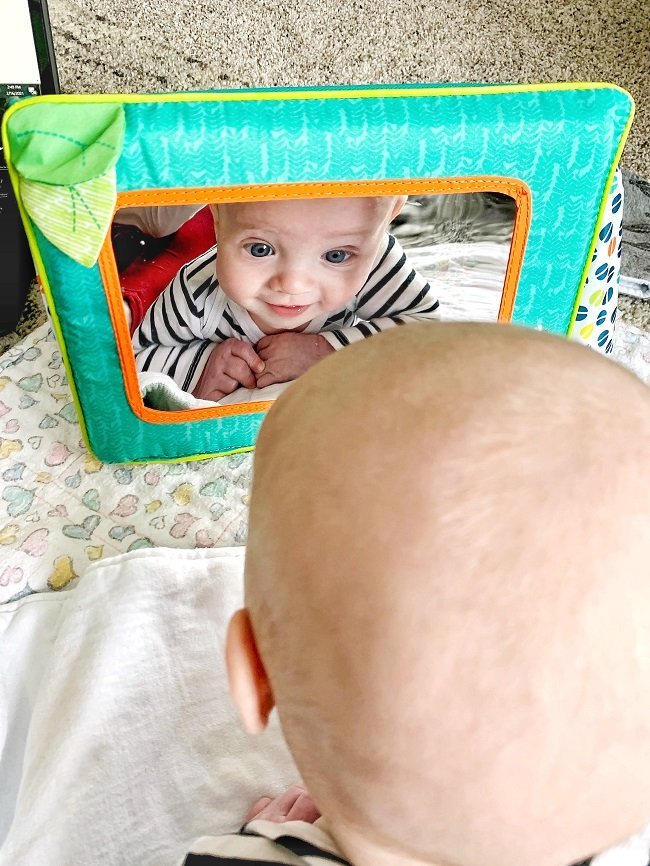Making Tummy Time Fun – Gross Motor/Vestibular Activity
Disclaimer: this post may contain affiliate links from various sites, including Amazon. As a member of the Amazon associates program, we earn a small amount from qualifying purchases when you use our referral link. This does not add any additional cost to you and helps with the expenses of keeping in Life and Littles up and running.
Tummy Time! I feel like for so many Mom’s this term can be triggering. Is my little one doing enough tummy time? My baby hates tummy time, do I really have to do this? I know these thoughts have crossed most mom’s minds. I was very fortunate that Eli has really liked spending time on his belly from a young age. While working from home I was able to get in ten minutes here and there of peaceful tummy time throughout the day, and even with a kid who liked being on his stomach I found myself questioning if he was spending “enough time” there. Eli loved looking in the mirror when he was on his belly and from 2-3.5 months this kept him pretty entertained during our tummy time sessions. (R loved looking into his mirror too!)
Once Eli hit 4 months old he had begun rolling from his back to his belly and I couldn’t stop him from being on his tummy almost all the time. It seemed like this was his new favorite position. While he still liked checking himself out in his mirror (if I was that cute I probably would too) I could tell that he was getting bored! He still wasn’t strong enough to use one hand to reach for a toy in this position or to push up onto his hands, so I began wracking my brain for ways to engage with him during tummy time. Then, my PT brain kicked in: vestibular work would be perfect to help make tummy time fun.
What the heck does “vestibular” mean?! The vestibular system is part of the sensory system in our brains that tell us about motion and how our body moves in space. The small organs in our inner ears send information to our brains that tell us how quickly and what direction our bodies are moving and help us from falling over. Babies get almost constant vestibular input while they’re in the womb, sensing their mother’s movement and their own as they flip and flop around. Babies continue to favor vestibular activities after they’re born - that’s why most babies are comforted by being rocked, bouncing on your knee or by laying in a swing.
So how do we integrate vestibular activity into tummy time? Once your little one has gained enough neck strength to hold their head up for around 30 seconds at a time while laying on their bellies. it is a good time to try this exercise. Position your baby on their belly on one end of a long towel or blanket. Lift the end of the blanket or towel that baby is not laying on and slowly begin to pull baby forward. It’s like their very own magic carpet ride! Your baby may look concerned or confused at first, I know Eli did, but after a few seconds he broke out in a huge smile.
I like to mix up the direction that I pull to keep tummy time fun and interesting, switching between forward, backwards and sideways. You can also vary the speed that you use, I tend to be very cautious with this movement going from slow to only slightly faster and back to slow. Make sure to give your baby breaks in between to rest their head or even relax on their back!








